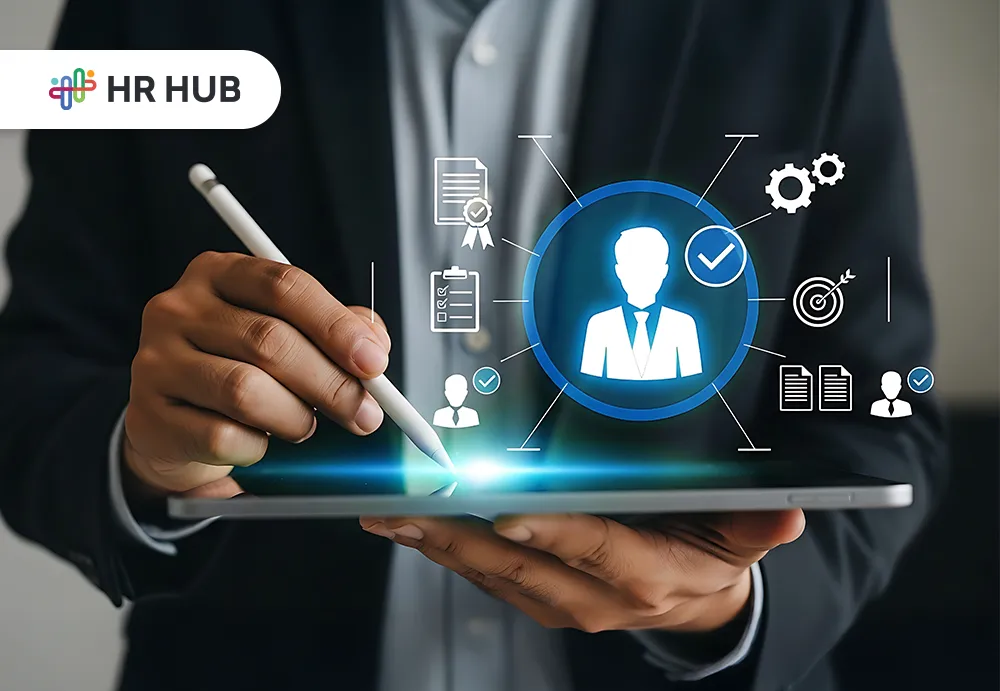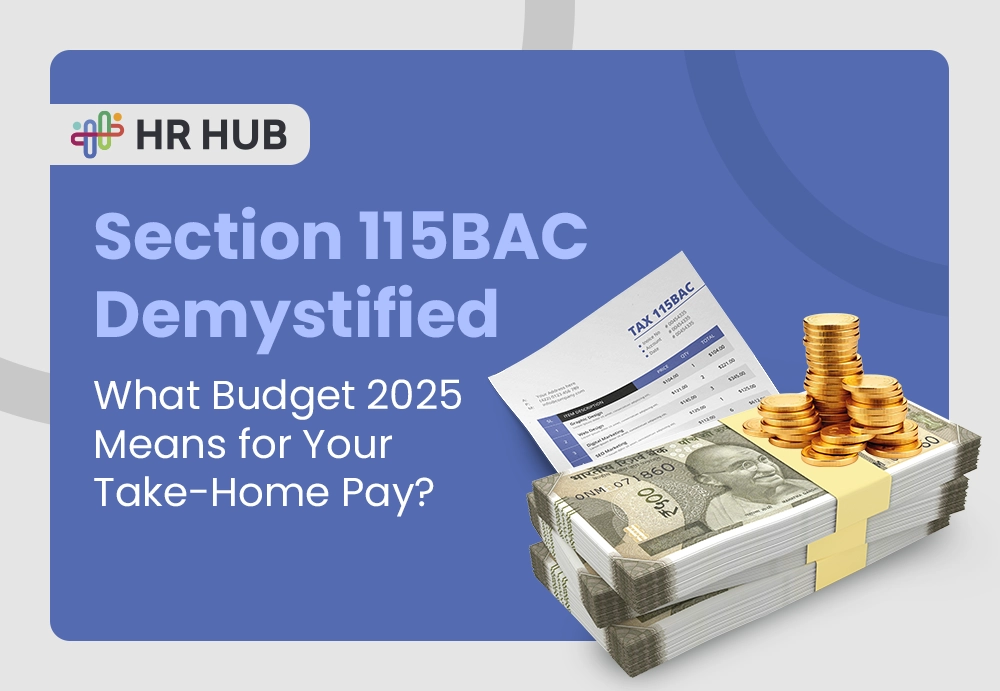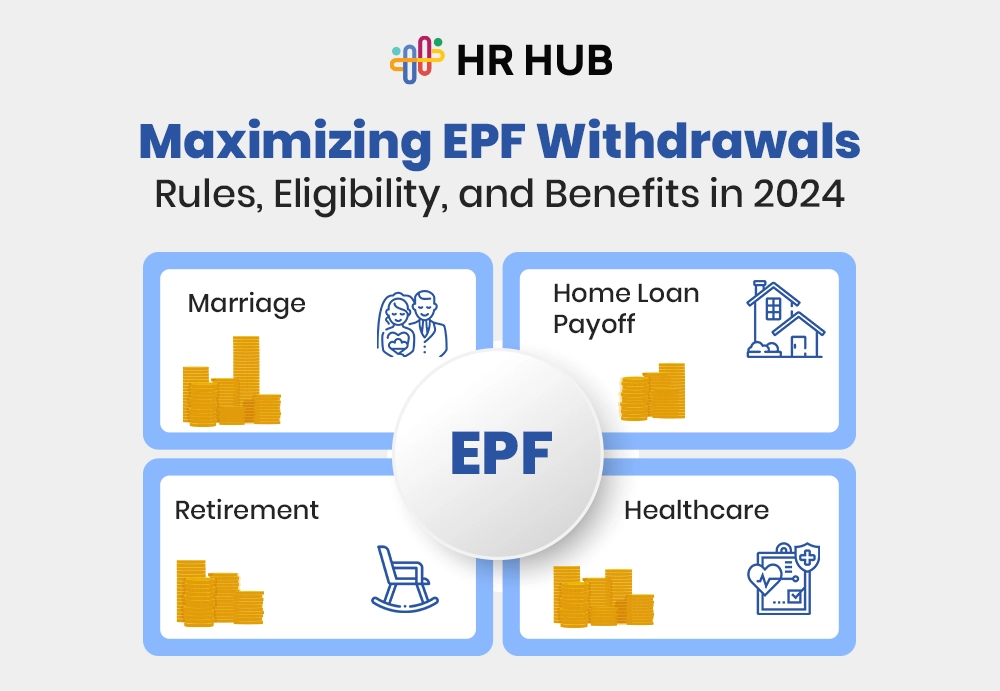


This site uses cookies to deliver our services. By using our site, you acknowledge that you have read and understand our Cookie Policy. Your use of HR HUB's services is subject to these policies.

Imagine an employee’s journey as a story—not a straight line, but a dynamic, evolving narrative that shifts with time, ambition, and experience. Now imagine if that story could be intelligently guided at every step—anticipating needs, adapting to changes, and evolving with both the individual and the organization.
Welcome to the future of employee life cycle management, where it’s not about “managing people” anymore—it's about elevating experiences through the power of AI, rich data insights, and ultra-personalization.
This isn’t a sci-fi HR fantasy. It’s already happening.
The old-school employee lifecycle was designed for stability. It followed a clean, linear flow:
Recruit → Onboard → Train → Appraise → Promote → Exit
This model was effective in the 1990s and early 2000s, when roles were rigid, expectations were predictable, and careers were built on long-term loyalty. However, by 2025, the workplace will no longer be that simple.
Here’s what’s changed:
And so, organizations are waking up to the fact that managing the talent management life cycle today means embracing fluidity, agility, and personalization. The standard lifecycle? It’s become a dynamic loop.

Let’s face it—humans are incredible at empathy, intuition, and connection. But when it comes to processing thousands of data points, identifying invisible patterns, or scaling personalization across hundreds (or thousands) of employees?
We hit a wall.
That’s where AI becomes more than a tool—it becomes an intelligent partner. One that doesn’t just automate tasks, but augments thinking. One that can scan, sense, and suggest. One that can lift HR from process-driven operations to proactive, strategic decision-making.
Let’s explore exactly how artificial intelligence is quietly reshaping every chapter of the employee life cycle management story.
Traditional hiring often relies on instinct, manual resume reviews, and historical biases. But AI flips the script.
AI-powered recruitment tools analyze thousands of data points—resume structure, language usage, social footprint, historical performance data, and psychometrics—to flag candidates that match not only the role, but also the organization’s culture and values.
Example: An AI-driven ATS might identify that high-performing marketers in your team tend to have experience with fast-paced startups and high adaptability scores. It can prioritize candidates with similar traits—even if they don’t come from conventional backgrounds.
Beyond that, AI also enhances:
Result? Faster hiring, better fits, and reduced turnover—optimizing the talent management life cycle from the very first touchpoint.
Onboarding is no longer a checklist. It’s the first chapter of an employee’s story. AI helps make that story personal, adaptive, and meaningful.
Instead of a generic induction plan, new hires receive role-specific, personality-aligned, and even region-tailored onboarding journeys.
Example: An introverted designer working remotely might receive a self-paced onboarding journey with pre-recorded walkthroughs, quiet hours, and async team intros. Meanwhile, a sales hire might receive live role-playing sessions, direct coaching, and faster access to CRM.
AI tracks onboarding progress and sentiment, offering insights like:
This feedback loop ensures onboarding doesn’t end on Day 30—it evolves into ongoing integration.
Performance reviews once a year? That’s HR from a different decade.
Today’s talent wants real-time recognition, growth feedback, and clear next steps. And AI is delivering just that—by monitoring productivity tools, feedback systems, project outcomes, and even collaboration data.
AI can:
Example: Imagine a notification that says:
“Ritika’s client presentations have consistently scored high on clarity and impact. Consider nominating her for the client excellence award.”
Now, performance becomes proactive rather than reactive. The loudest person in the room no longer dominates—data drives fair recognition.
Let’s admit it—corporate learning has often been a painful checkbox exercise. But AI turns it into a dynamic, personalized growth experience.
It recommends learning paths based on:
Example: Just completed a project in supply chain? The system might suggest a short AI course in logistics. Did you take a course on leadership? It may pair you with a peer mentor who recently got promoted.
The best part? AI doesn’t just assign learning. It:
This is what modern employee lifecycle management systems are built to deliver: growth that’s as addictive and intuitive as your favorite content platform.
When someone resigns, it often feels “out of the blue.” But in truth, there were warning signs all along—just hidden in the noise.
AI reads between the lines. It detects patterns like:
Example: A high performer starts avoiding team calls, stops updating their task boards, and submits a half-hearted review. AI flags them as at-risk, prompting HR to check in before the resignation letter lands.
You don’t just save an employee—you show them they matter.
And that’s the power of proactive HR—from transactional to transformational.
This AI-driven approach doesn’t just make HR faster or cheaper. It makes it better. More human. More strategic. More aligned with the way people work and grow today.
That’s the heart of modern employee life cycle management—and the reason why AI is no longer a future investment. It’s today’s competitive advantage.
If AI is the engine, data is the fuel. But here’s the real truth: raw data is like crude oil—it’s useless until refined, interpreted, and used meaningfully.
In the world of modern HR, data isn’t just a spreadsheet of employee IDs and leave balances. It’s a living, breathing ecosystem of insights that can transform how you hire, engage, grow, and retain your workforce. Yet many companies still treat data as a post-mortem report—something to check after the damage is done.
But not anymore.
The new wave of employee life cycle management treats data as the strategic core of every decision. From forecasting attrition to designing learning journeys, it’s the difference between guessing and knowing.
Let’s break it down.
In traditional HR systems, data is often stored in silos. Recruitment software knows one thing. Payroll knows another. Engagement surveys stay buried in Google Sheets. And nobody talks to each other.
A truly modern employee lifecycle management system connects these dots to provide a 360-degree view of the employee journey—from their initial click on your job posting to their final exit interview.
This interconnected view draws from:
Example: You analyze data and discover that most of your high-performing team leads came from non-traditional educational backgrounds and were assigned mentors in their first 90 days. This prompts you to revisit your hiring filters and institutionalize early mentorship across departments.
This is how data evolves from record-keeping to decision intelligence.
Let’s be honest—many management decisions are still based on instinct, hearsay, or personal bias.
However, when you incorporate real-time analytics, you transition from intuition to evidence.
No more guessing who’s disengaged. No more delaying performance interventions until appraisal season. No more struggling to prove ROI on your HR strategies.
With the right analytics tools embedded in your talent management life cycle, you can:
Example: A department’s performance drops. Instead of launching a generic retraining session, your analytics reveal that employees feel under-communicated with and crave leadership visibility. You schedule monthly “Ask Me Anything” sessions instead, and engagement rebounds within two cycles.
That’s clarity over chaos. And it’s only possible with real-time, insight-rich data.
Data doesn’t just help HR—it transforms culture.
When employees see that decisions (about promotions, raises, recognition, training) are based on data rather than favoritism, trust increases. When managers are given real-time insight into team well-being, they don’t wait until exit interviews to act—they coach more effectively in the moment.
Also, let’s not forget the compliance layer.
In other words, data allows organizations to walk the talk.
And as your people strategy becomes data-driven, it naturally becomes more personalized, proactive, and performance-aligned.
Old HR systems were built to record. Modern ones are built to reveal.
They don’t just tell you what happened. They tell you why it happened—and what to do next.
This is the future of employee life cycle management: One where HR no longer sits on the sidelines with spreadsheets. One where data drives better people decisions across every lifecycle stage—recruitment, engagement, growth, and beyond.
So, the next time someone says “HR is soft,” show them your dashboards.
And watch the conversation change.

If you’ve made it this far, you already know: The old way of managing employees doesn’t work anymore.
That’s why forward-thinking organizations are turning to platforms like HR HUB—not just for automation, but for true transformation.
HR HUB is more than an HR tech product. It’s an intelligent employee lifecycle management system that reimagines every touchpoint across the journey:
And all of this is beautifully integrated, mobile-ready, and aligned with your culture, not the other way around.
HR HUB helps you move from process to experience, from management to mentorship, from lifecycle tracking to lifecycle elevation.
Employee journeys are no longer one-way streets. They’re ongoing conversations—shaped by trust, guided by data, and enriched by technology.
To lead in this new world, you need more than tools. You need vision. Insight. Empathy.
And if you’re ready to shape employee experiences that are not only efficient but unforgettable, HR HUB is your place to begin.



Ready to streamline your HR processes? Contact us today to learn how HR HUB can help your organization thrive. Fill out the form, and one of our experts will reply shortly. Let's empower your workforce together!
